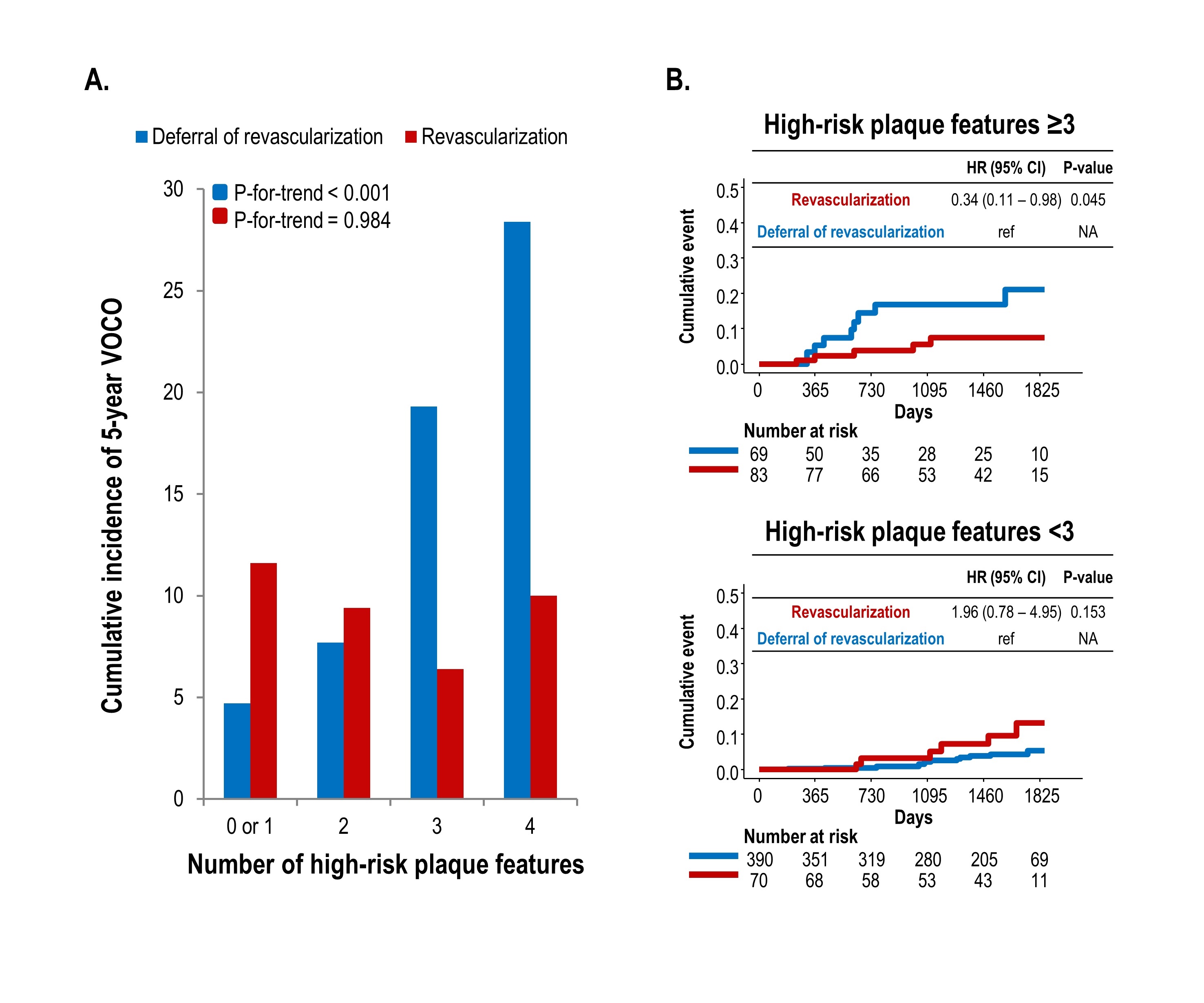TCTAP A-002
Vulnerable Plaque
Prognostic Relevance of High-Risk Plaque Features in Guiding Treatment Strategy
Seokhun Yang1, Doyeon Hwang1, Joo Myung Lee2, Eun-Seok Shin3, Chang-Wook Nam4, Joon-Hyung Doh5, Jinlong Zhang6, Hitoshi Matsuo7, Takashi Kubo8, Tsunekazu Kakuta9, Bon-Kwon Koo1
Seoul National University Hospital, Korea (Republic of)1, Samsung Medical Center, Korea (Republic of)2, Ulsan University Hospital, Korea (Republic of)3, Keimyung University Dongsan Hospital, Korea (Republic of)4, Inje University Ilsan Paik Hospital, Korea (Republic of)5, The Second Affiliated Hospital of Zhejiang University School of Medicine, China6, Gifu Heart Center, Japan7, Tokyo Medical University, Japan8, Tsuchiura Kyodo General Hospital, Japan9
Background
Although vulnerable plaque is associated with future coronary events, the criteria for plaque characteristics to warrant revascularization have not been established.
Methods
A total of 697 vessels with available coronary CT angiography (CCTA) and invasive fractional flow reserve (FFR) of CCTA-FFR registry (NCT04037163) from 9 centers of 3 countries were included. All vessels underwent FFR-guided deferred or performed revascularization that achieved final FFR > 0.80. High-risk plaque features (plaque burden ≥ 70%, minimum lumen area < 3.5mm2, low-attenuation plaque, and positive remodeling) were identified on CCTA. All FFR tracings and CCTA were analyzed by an independent core laboratory. The primary endpoint was vessel-oriented composite outcome (a composite of cardiac death, myocardial infarction, or revascularization, VOCO) at 5 years and adjudicated by an independent committee.
Results
The mean FFR was 0.81 ± 0.14. The cumulative incidence of 5-year VOCO was 7.2% in 517 deferred vessels, and 9.1 % in 180 revascularized vessels (p = 0.425). Overall VOCO incidence increased with the increasing number of high-risk plaque features (p-for-trend = 0.006), but this pattern was different between deferred and revascularized vessels. In vessels with 0 or 1, 2, 3, and 4 of high-risk plaque features, the cumulative incidence of VOCO was 4.7%, 7.7%, 19.3%, and 28.4%, respectively, (p-for-trend < 0.001) in deferred vessels, but 11.6%, 9.4%, 6.4%, and 10.0%, respectively (p-for-trend = 0.984) in revascularized vessels (Figure A). In vessels with ≥ 3 high-risk plaque features, revascularized vessels had a lower risk of VOCO than deferred vessels (HR 0.34, 95% CI 0.11 – 0.98, p = 0.045). However, in vessels with < 3 high-risk plaque features, revascularization did not show better outcomes than deferral of revascularization (HR 1.96, 95% CI 0.78 – 4.95, p = 0.153) (Figure B).

Conclusion
In vessels with multiple high-risk plaque features, clinical outcome after revascularization was better than after medical treatment alone among non-ischemia causing lesions. Thus, identifying plaque morphology can optimize treatment strategy selection.



